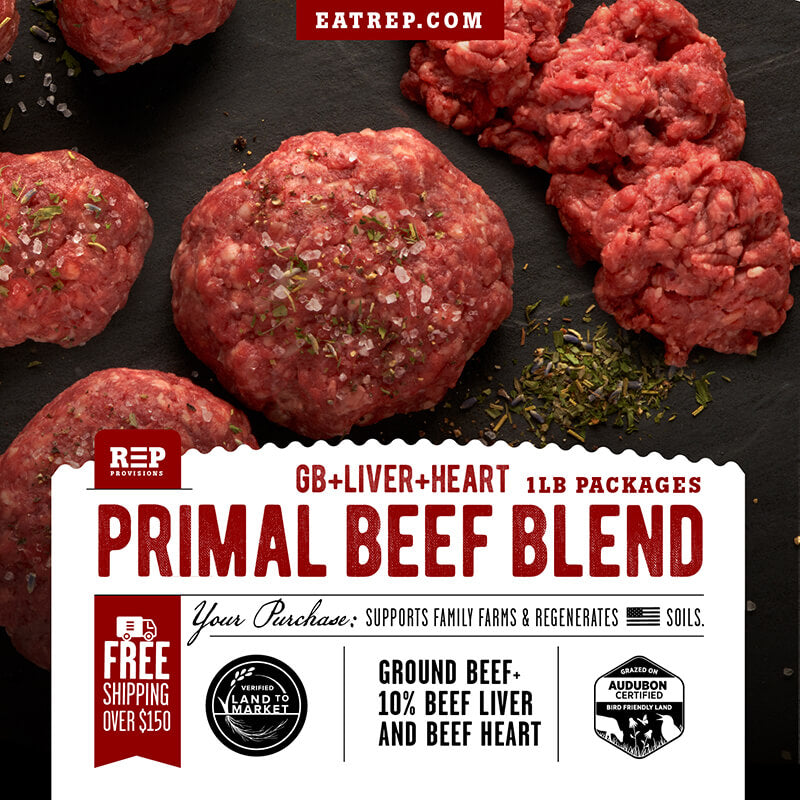
Cooking grass-fed beef differs slightly than cooking grain-fed, conventional beef. The importance of knowing the differences between the two can preserve the flavors and tenderness of the meat during the cooking process.
Compared to grain-fed, cattle that are pasture-raised from start to finish are naturally leaner and contain more healthy fats. The true difference is attributed to the animal’s lifestyle. Grain-fed cattle receive little or no exercise while grass-fed cattle are healthy and considerably more active, resulting in beautiful muscle quality.
The meat requires gentler cooking to protect the integrity of those muscle fibers. Cooking with lower cooking temperatures and shorter cooking times will ensure the muscle is well-preserved.
The best grass-fed steaks require a good cooking strategy. Start with a delicious sear on the outside, then finish cooking at a lower temperature. This can be accomplished in two ways:
- Sear in a pan and then roast in oven
- Sear on a grill on high heat and then move to indirect heat
Cooking strategy matters, a lot. Implementing these techniques will help you achieve an incredibly tender, juicy, and flavor-filled grass-fed steak in your own home.
Thaw
- Thaw the steaks in the refrigerator for 24 hours, or until completely thawed.
- Quick- thawing method: place packaged steaks in a bowl or sink of cool water. As the steaks defrost, the temperature of the water will increase. Keep replacing the water with cool water to help the process along. Depending on the size of the steak, quick thawing will take 15-40 minutes.
- Remember to not warm or hot water when thawing, and never use a microwave to defrost the meat. Microwaving the meat allows moisture to escape; preserving the moisture is key for a tender steak!
Prep
- Remove from refrigerator 1 hour before cooking. Starting the steaks at room temperature reduces the temperature variation from the refrigerator to the grill that the meat has to adjust to.
- Pat the steak dry, then salt both sides of the steak liberally with sea salt or coarse salt.
- Let the steaks come to room temperature for about an hour. Prepare the grill or oven during this time.
- Rinse the steaks under cool water and pat dry. Lastly, brush both sides of the steaks with a high-quality, high-heat oil and dust with black pepper.
Outdoor Cooking on the Grill
- Start the grill and warm to high heat. When hot, turn off a section of burners to designate a space for the steaks to continue cooking after the initial sear.
- Sear the steaks directly over the flame for 2 minutes on each side. Keep the lid down.
- Next, move the steaks to the unlit side of the grill and prop the lid. Allow steaks to cook until the internal temperature reaches between 120-135 ° F. Tip: Use a timer and a cooking thermometer. See the guide below to determine which internal temperature matches your preference of doneness.
- Remove the steak from the grill when the internal temperature reaches about 10 degrees lower than your desired temperature.
- Let the steak rest for 10 minutes as it continues to cook from the residual heat.
Indoor Cooking
- Preheat the oven to 350 °F and heat a large cast iron (or other heavy-bottom, oven-proof skillet) over high heat. The more seasoned the better.
- Once the skillet is hot, sear the steak for 2 minutes on each side.
- Leaving the steak in the skillet, transfer to the oven and allow the steak to cook until the internal temperature reads 120-135 ° F. Tip: Use a timer and a cooking thermometer. See the guide below to determine which internal temperature matches your preference of doneness.
- Remove from the oven and allow the steak rest for 10 minutes as it continues to cook from the residual heat.
GRASS-FED BEEF INTERNAL TEMPERATURE GUIDE
RARE — 120 F
MEDIUM RARE — 125 F
MEDIUM – 130 F
MEDIUM WELL – 135 F
WELL – 140 F
NOTE: To achieve your desired doneness, remove the meat from the heat source when the thermometer reads 10 degrees below listed temperature. The meat will finish cooking via residual heat as you allow it to rest over the next 10 minutes.
*The American Grassfed Association suggests the ideal temperature for grass-fed steaks is rare to medium rare. Cooking to temperatures over medium will yield a drier steak as the fat will begin to cook off.
QUICK TIPS
- Lower the cooking temperature. Slightly reducing cooking temperatures by 10-15 percent when cooking grass-fed beef can help ensure the fat (including healthy Omega 3s and CLA) is not cooked off.
- Reduce the cooking time. Heat is able to penetrate through grass fed beef easier than its fattier grain-fed counterpart. The protein structure is destroyed when the beef is cooked too quickly, which can produce a tough and chewy steak. Cooking the beef 30-50% slower will ensure the beef retains its tenderness and flavor.
- Use a cooking thermometer. Measuring the temperature in the most inner part of the steak is the best way to achieve your desired temperature. Due to the leanness of grass-fed beef, it is trickier to spot when it is done cooking like it may be when cooking conventional beef. Using a cooking thermometer will sure your beef is cooked just the way you like it, every time.
Enjoy Your Steak!





This article was very helpful.
Thank you